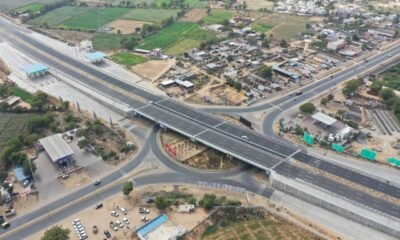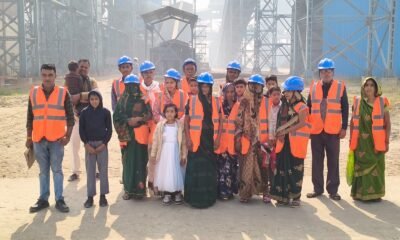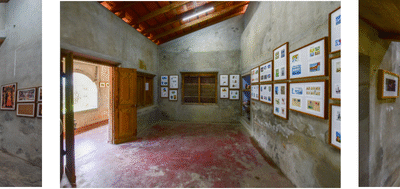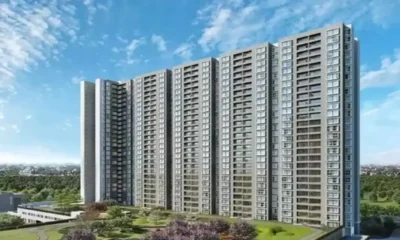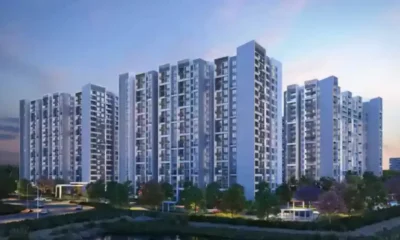News
This Year is More About Thoughtful Homebuying, M2K’s Vishesh Rawat

New Delhi, September 30, 2025: Vice President and Head of Marketing, Sales and CRM at M2K Group Vishesh Rawat shares insights on the real estate market in 2025. He discusses how GST 2.0 rate cuts could improve housing affordability, the impact of the festive season on buyer sentiment, and emerging trends like smart homes, wellness-focused living, and community spaces. Vishesh also highlights how upcoming metro expansions are transforming peripheral areas into connected, thriving hubs, shaping both residential choices and investment opportunities.
How will the recent GST 2.0 rate cuts impact housing affordability in 2025?
The GST 2.0 rate cuts are expected to modestly improve housing affordability in 2025 by reducing construction costs, as key inputs like cement, tiles, and paints now attract lower tax rates. Developers could see a 3–5 per cdnt drop in some of the input costs, which may translate into better payment plans and/or add-ons in the flats in terms of extra furnishing and fittings like modular kitchens & wardrobes, ACs, etc., for investors and buyers . The benefit will be more visible in new and under-construction projects. However, stamp duty, land costs, and financing remain unchanged, meaning affordability gains will be real but limited, with a larger impact unfolding over the medium term.
The festive season has always been considered an auspicious and high-demand period for real estate. How do you see it impacting buyer sentiment and housing sales in 2025?
The festive season has always been a key period for real estate, and 2025 is expected to continue this trend with optimism. Developers often launch new projects with attractive offers, while financial institutions provide favorable loan terms, encouraging buyer participation. Early indicators show signs of positive market sentiments, with housing sales in key cities like Gurugram picking up, reflecting strong buyer confidence. Government incentives and seasonal promotions further enhance affordability and sentiment. Overall, the festive period presents an auspicious window for homebuyers, particularly in mid-to-premium segments, combining cultural significance with opportunities for strategic investment and value-driven purchases.
Which real estate trends do you see dominating in 2025?
2025 is more about thoughtful homebuying. People are no longer chasing just bigger spaces—they want smarter, healthier, and more sustainable living. Features like energy-efficient designs, smart home tech, and well-planned community zones are becoming must-haves rather than luxuries. Smart homes with features like smart locks, video door phones, CCTV cameras for round-the-clock security, and energy-efficient systems are preferred by customers. These tech-enabled conveniences not only enhance safety and comfort but also align with their demand for modern, connected, and future-ready living. In the premium segment, especially, wellness-led living—green landscapes, fitness-focused amenities, and mindful design—is dominating the market. Buyers are looking for homes that add real value to their everyday life, not just an address. So the trend is clear: residential demand in 2025 is all about lifestyle, sustainability, comfort, and long-term capital appreciation.
How are the shifting preferences of millennials and young families changing smart home features and amenities?
There’s a clear shift in what younger buyers want from their homes. Millennials and young families are looking for minimalistic yet functional design, and smart features that make life easier. Community-driven spaces are also becoming central, whether it’s wellness zones, co-working lounges, or social clubs. For them, luxury is less about exclusivity and more about experiences, convenience, and connection. This change is pushing developers to design homes that blend practicality with lifestyle, creating spaces that feel modern, social, sustainable, and effortless to live in.
What impact will upcoming metro expansions have on property markets in peripheral areas?
Metro expansions have a history of transforming ‘outer’ markets into thriving centres. The upcoming corridors will do the same for the peripheral areas of Gurugram, where buyers often weigh connectivity heavily in their decisions. Once a metro comes in, it eases the commute, and these areas feel accessible for both residents and businesses. In Gurugram, the sanctioned Millennium City Centre (earlier HUDA City Centre) to Cyber City metro corridor will span nearly 27 km with 27 stations, passing through major points like Subhash Chowk, Hero Honda Chowk, Palam Vihar, and Udyog Vihar. A spur from Basai Village to Sector 101 on Dwarka Expressway will directly serve Sector 101 and benefit Sector 104, giving these developing areas seamless metro connectivity. For developers, it opens the scope for larger integrated projects. For investors, it signals appreciation potential. In simple terms, every new metro line is an engine that fuels real estate growth by making communities more connected and livable.

 News2 weeks ago
News2 weeks agoInfrastructure Automation Company Enlite Launches World’s First Patented Edge Controller for Intelligent Infrastructure

 News2 weeks ago
News2 weeks agoIshara Art Foundation to Present Group Exhibition ‘Amphibian Aesthetics’ at Ishara House in Kochi

 News2 weeks ago
News2 weeks agoGodrej Properties Crosses FY26 Annual Business Development Guidance with Acquisition of 75-acre land parcel in Nagpur

 News3 weeks ago
News3 weeks agoMumbai Returns to Pre-Pandemic Investment Levels, Surpasses $1 Billion 4th Consecutive Year: Cushman & Wakefield

 News3 weeks ago
News3 weeks agoGurugram Premium Segment Drives Projected Rs 6.65 Lakh Crore Market: ANAROCK

 News2 weeks ago
News2 weeks agoReal Estate Investment Momentum in APAC, India to Hold Steady Through 2026: Colliers’ Survey Insights

 News2 weeks ago
News2 weeks agoK2 Infragen Delivers Robust H1 with 76.5% Revenue Growth, 70% Profit Jump

 News2 weeks ago
News2 weeks agoSumadhura Group Unveils Sustainable Urban Roadway in East Bengaluru Designed to Serve over 5,000 Families


